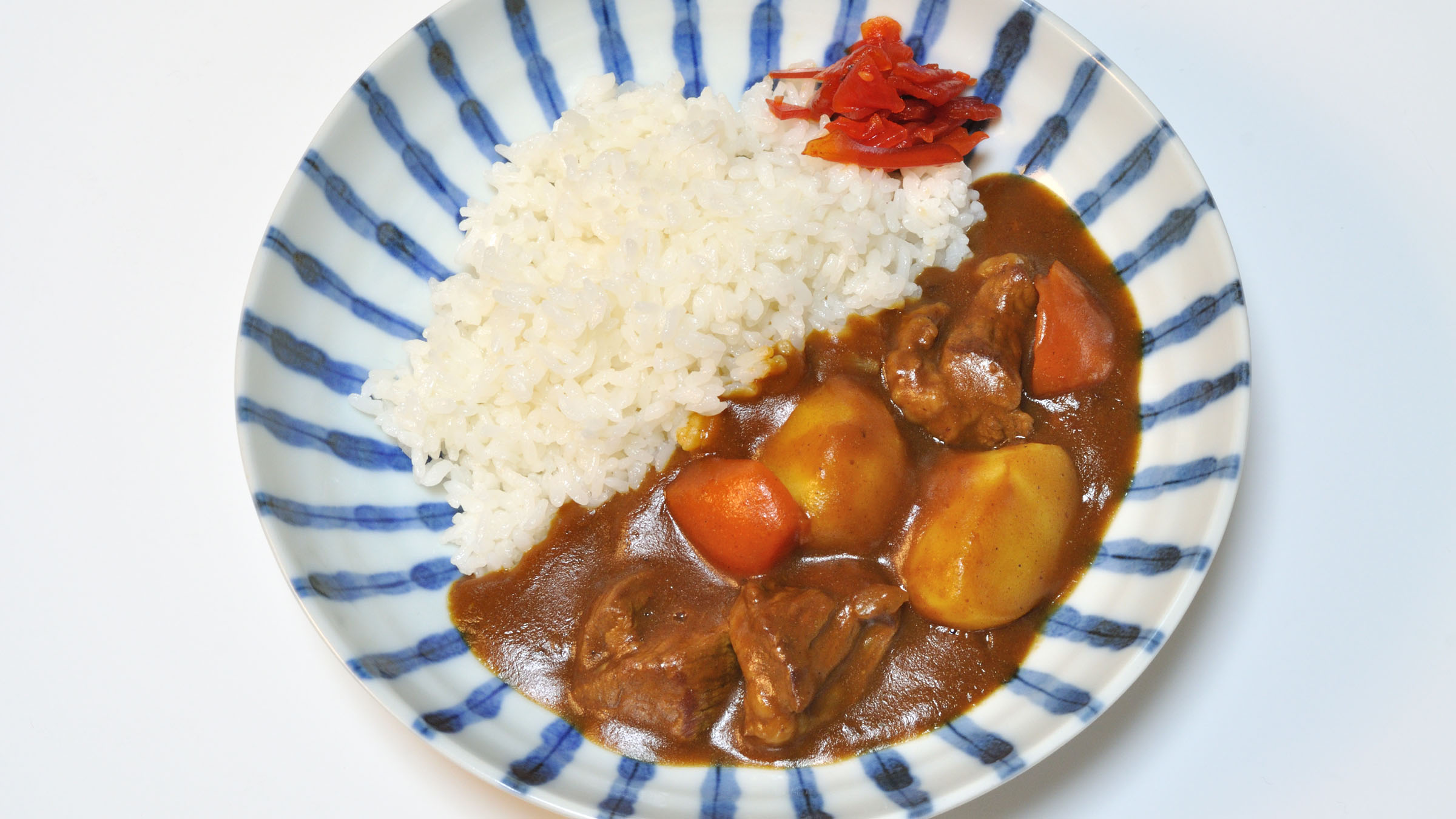Few dishes stir such curiosity in those new to Japanese cuisine as karē raisu, or Japanese curry rice. Unlike sushi, ramen and other Japanese dishes that have become popular around the world, Japanese curry is completely unknown to many people outside the country. It therefore makes it all the more surprising that within Japan, curry rice is so beloved that it’s often described as an unofficial national dish.
In fact Takashi Morieda, a Tokyo-based photojournalist who has spent extensive time studying the history of Japanese curry, compares it to “what fish and chips are to the British and hamburgers to the Americans” in his essay, The Unlikely Love Affair with Curry and Rice.
With its gravy-like sauce and mild flavour, Japanese curry bears little resemblance to the Thai and Indian dishes that most of us associate with the term ‘curry.’ So how did this unusual style of curry become one of Japan’s favourite dishes?

[Photo: Michael Saechang/Flickr]
History Of A Spice Mix
To rewind a bit, curry is believed to have been introduced to Japan by the British in the late 19th century, when Japan ended its long isolation from the Western world. Britain’s colonial stronghold over India had fuelled the widespread popularity of curry powder, a premixed spice blend that appeared in the late 18th century and made it easier for Brits to prepare curry at home. The flavour of curry powder had also been adapted to suit the British palate, and it was this Anglicised version of curry that British sailors brought with them to Japan.
Curry soon became a go-to dish of the Japanese navy, because it could easily be prepared in large batches and modified to incorporate various meats and vegetables. The dish gradually evolved to appeal to Japanese diners in the wider population and began appearing on restaurant menus across the country. Instant curry roux blocks were introduced in the 1950s, securing the dish’s status as a staple for Japanese home cooks.
Currying Flavour
According to Aki Urata, executive chef of Kinton Ramen, a chain of ramen restaurants with locations in Canada, Japan and Korea, there are now over 800 kinds of instant curry roux available in Japan. Curry roux blocks come in a range of flavours and spiciness levels (although even the most fiery flavours don’t usually register as hot for fans of spicy cuisine). “Japanese curry is not crazy-spicy compared to the original Indian curry,” Urata explains. Many Japanese families like to combine different brands of instant curry roux to create their own signature sauces with distinctive flavours and spiciness levels.

Although authentic cuisine is often synonymous with made-from-scratch, the most ‘traditional’ way to prepare Japanese curry is to use instant curry roux, just like home cooks in Japan do. Naturally, instant curry roux is widely available at grocery stores in Japan but, depending on where you live in the world, you might find them sold in the Asian product aisles of big supermarket chains. If not, most Japanese specialty shops will carry instant curry roux, or you can even order packages of it on Amazon. S&B and House are two of the most popular brands in Japan.
If you’re unable to track down a premade Japanese curry mix, you can make the curry roux from scratch using just five ingredients.
A Simple Dish
Growing up in Yamaguchi, Aiko Uchigoshi, sous chef at Toronto-based Japanese restaurant Hana, remembers eating curry prepared by her grandmother every Saturday. “It’s very easy to make and everyone loves it,” says Uchigoshi. “People can buy the curry paste at the grocery store anywhere, and then you just put in vegetables and protein. It’s very convenient.”
The basic steps for preparing Japanese curry are simple:
1. Cut the vegetables and protein into bite-sized pieces, and sauté them until they’re browned.
2. Add water (the curry roux packet should provide guidelines on how much to use) and simmer the mixture.
3. Once everything is cooked, turn off the heat and dissolve the instant curry roux blocks into the broth.
4. For the classic version of the dish, serve the curry over a bed of sticky rice.

[Photo: boo lee/Flickr]
To create the most flavourful curry dish, Uchigoshi recommends letting the mixture simmer for at least 3 to 4 hours (although this time can certainly be reduced if you’re in a rush). She adds that Japanese curry tastes even better on the second day, so home chefs may want to consider letting the initial batch cool overnight before reheating it the next day.
According to Urata, carrots, onions and potatoes form the basic mirepoix of Japanese curry. For the protein component, he says that beef is the most popular choice, but pork and chicken are frequently used as well.
Although these ingredients are common, there aren’t really any hard-and-fast rules for what must go into a Japanese curry. In fact, the adaptability of the dish is one of the many reasons why it’s a favourite of home cooks in Japan. It can easily become a clean-out-the-fridge meal that offers an opportunity to use up whatever leftover vegetables and proteins you have on hand.
Uchigoshi adds that the versatility of Japanese curry has led to the development of regional variations of the dish, with cooks across the country preparing it with whatever ingredients are available to them locally. Hokkaido, Japan’s northernmost prefecture, is well known for seafood, so Uchigoshi says curries prepared in this region will often incorporate fresh-off-the-boat proteins. Similarly, chefs in Kagoshima sometimes add the prefecture’s famous Wagyu beef to their curries, according to Uchigoshi.
The crowd-pleasing flavour of Japanese curry also lends itself to a range of different serving styles. Uchigoshi says that her family would often make a big batch of curry to eat for several days. On the first night, the curry would be eaten over the traditional rice, but then her grandmother would serve it over udon or soba noodles on subsequent days, so it felt like a new meal. “We would make a lot and then eat it for three days,” says Uchigoshi.
Japanese curry may not be the country’s most famous dish, but it’s one that’s close to the heart of many Japanese people and a must-try for anyone with an interest in the country’s cuisine – and you don’t even need to leave home to enjoy it.
#staysafe #stayathome #selfisolation #selfisolationactivities
[Photo at top: Ocdp/Wikimedia Commons]














Sorry, the comment form is closed at this time.